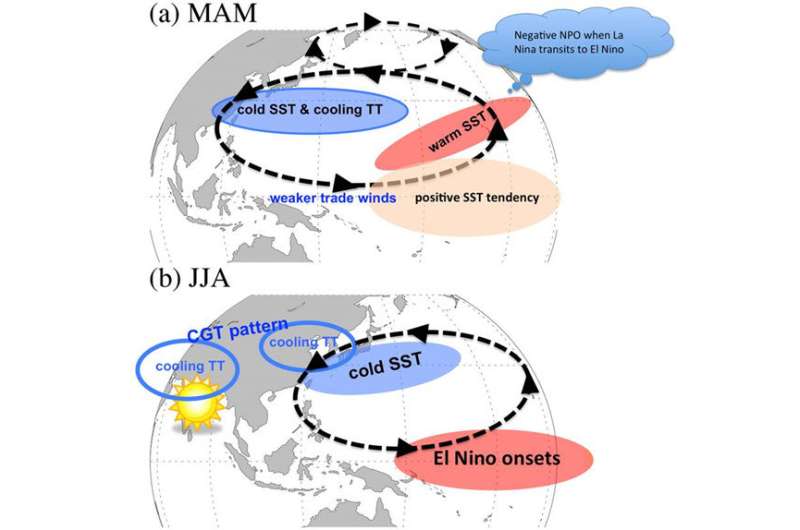Scientists reveal drivers of prolonged spring-summer drought over North China

North China faces a serious water crisis. Almost half of China's population lives in the region, and most wheat and corn are grown there. Since the late 1990s, severe and extreme droughts have frequently occurred, and drought affects an area that has increased by 3.72 percent per decade over the past five decades, posing great challenges for regional sustainable development. Scientists have been concerned that if climate continues to warm in the future, there is a high confidence level that drought over North China will continue to increase. Thus, it is of great importance to identify the drivers and dynamic mechanisms of North China drought in order to improve drought prediction and water management.
A recent study published in the Journal of Climate by scientists from the Institute of Atmospheric Physics at Chinese Academy of Sciences, Met Office Hadley Centre and Beijing Climate Center reveals the large-scale dynamic drivers of the prolonged spring-summer drought (PSSD) over North China, where prolonged drought tends to occur in spring and persist to summer with severe societal impacts.
Their study shows that seven of the selected eight North China PSSD events occurred when La Niña transited to El Niño with a negative North Pacific Oscillation (NPO) phase in preceding winter. The two key circulation anomalies in spring are set directly by a negative NPO phase generated in the preceding winter. The NPO, in turn, forces an El Niño onset in summer through the so-called "seasonal footprinting mechanism." Consequently, sea surface temperature anomalies of El Niño in summer suppress Indian monsoon rainfall, triggering the tropospheric temperature cooling over East Asia through a circumglobal teleconnection along the East Asia upper-level westerly jet. This study demonstrates that ENSO phase transition from La Niña to El Niño is one of the important precursors of North China PSSD.
More information: Lixia Zhang et al, ENSO Transition from La Niña to El Niño Drives Prolonged Spring–Summer Drought over North China, Journal of Climate (2018). DOI: 10.1175/JCLI-D-17-0440.1
Journal information: Journal of Climate
Provided by Chinese Academy of Sciences

















